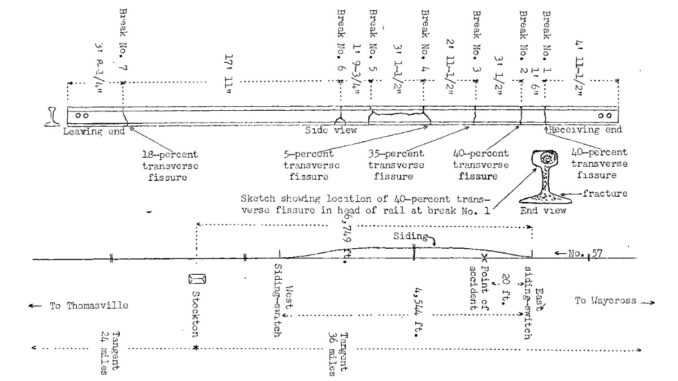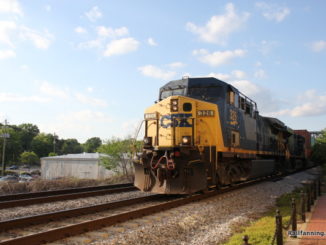
An Atlantic Coast Line Railroad train disaster in south Georgia at 11.45 p.m. on August 4, 1944, claimed the lives of 47 people, primarily black laborers returning home to Alabama for the weekend.
The 14-car train was traveling westbound at 65 m.p.h., five miles per hour below the speed limit, from Waycross, Georgia, to Montgomery, Alabama, on a single-track line through Stockton, Georgia. It was roughly 32 minutes behind schedule.
A broken rail beneath the ninth car derailed the 10th-14th cars into a siding, colliding with a freight train waiting to let the passenger train pass.
Most of those killed were in the train’s 10th car. The car was “sheared practically its entire length diagonally from the floor on the right hand side to the juncture of the roof and side sheets on the left hand side.”
“Bodies were lying sprawled in broken shapes,” the Associated Press quoted Turner Rockwell, managing editor of the Valdosta Times, as saying. “Some were near the engine of the freight train, evidently being jerked out of the car that was sliced in two. One body was thrown 50 feet clear of the wreckage.”
A hospital car carrying wounded soldiers to Finney General Hospital in Thomasville derailed in the crash.
A lack of light initially hampered rescue efforts. However, Army trucks with searchlights from Moody Field in Valdosta arrived to help in the operation.
The investigation said the wreck “was caused by a broken rail, as a result of the presence of transverse fissures.”
It also noted that this railroad had reported 61 accidents during the previous 4-and-a-half years caused directly or indirectly by broken rails.
“These actions indicate the operation of trains is such that excessive stresses are being exerted upon the track structure.”




